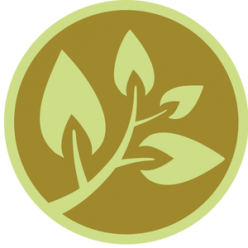Happy new year! Perhaps the passing of time feels especially poignant for genealogists who spend their days studying years gone by — I sure feel that way, at least! It’s a great time to recall the changes of the past twelve months and feel the potential and fresh start a new calendar signifies.
Continue reading 2019 Review & 2020 GoalsGeorge Soule: Thankful for My Mayflower Ancestor
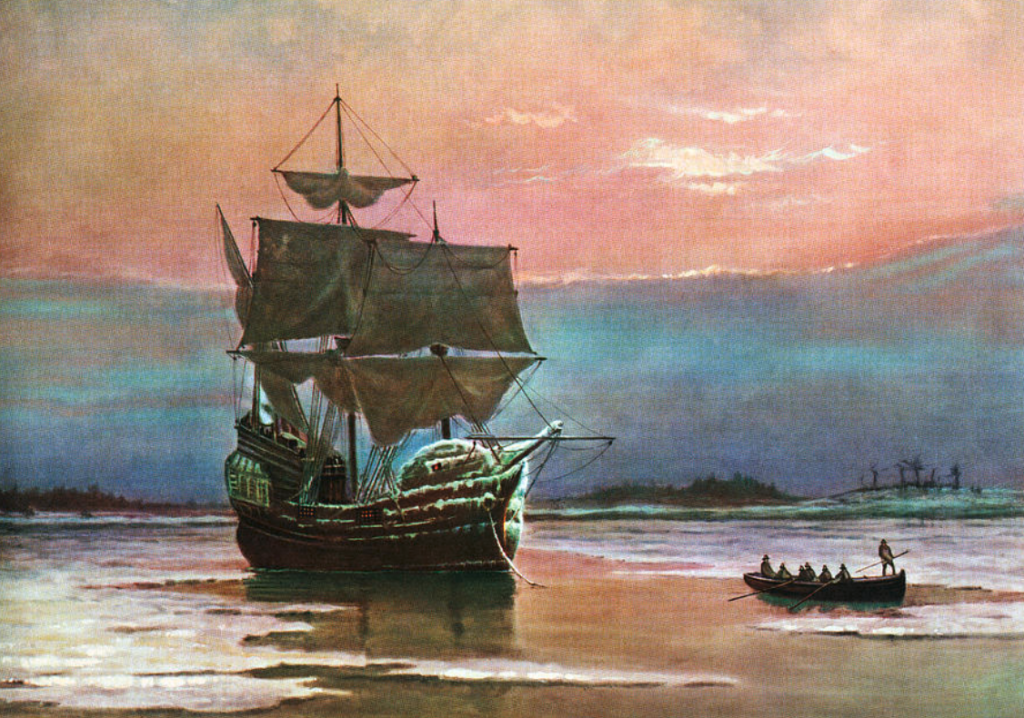
Millions of Americans can trace their roots to passengers on the Mayflower. These 102 individuals came to the New World in 1620 to worship as they felt convicted or to seek a better life. Without any clear ties to New England in my family tree, I never realized I was descendant of a Mayflower passenger — until earlier this year.
I visited RelativeFinder, a website by the BYU Family History Technology Lab, and entered my username and password for FamilySearch. From this information, RelativeFinder searches for famous people in your family tree. The search is based on the shared family tree at FamilySearch, which is notoriously incorrect (at least for me) most of the time. As I waited for the results, I reminded myself to treat anything that popped up as complete fiction.
At the top of my list was George Soule, Mayflower Passenger, my 10x-great-grandfather.
But as I looked at the links between George Soule and myself, it looked surprisingly…correct?! The family trees of Mayflower passengers are well-researched by the General Society of Mayflower Descendants and compiled into volumes that document at least the first five generations. Soule researchers have extended their lineages to seven generations on some lines in the Mayflower Families in Progress (MFIP) “pink books.” It is these books that listed George Soule’s descendents through Elizabeth Soles, born August 2, 1795, in Bladen County, North Carolina, who married Phillip Lemuel Faulk and migrated to Pike County, Alabama. These are my confirmed 4x-great-grandparents!
So this Thanksgiving is special to me, knowing I have a direct connection to a man who came to this land for religious freedom and a better life. George Soule landed at Plymouth as a servant of Edward Winslow, survived that first harsh year, and was one of the Pilgrims at the first Thanksgiving. After completing his indenture, George married, began a family, and amassed modest estate through hard work. Read more about George Soule on his Wikipedia page, at American Ancestors, or through his family association, Soule Kindred in America.
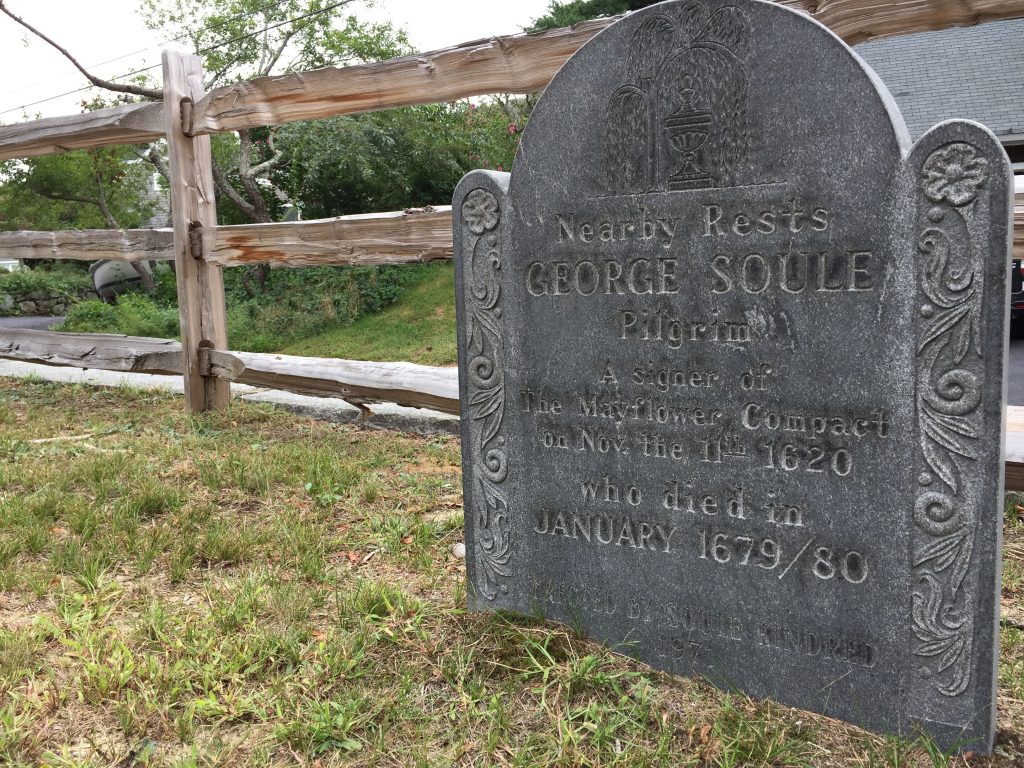
(Find-a-Grave, https://www.findagrave.com/memorial/5728447/george-soule)
I have several family members who read my blog, and I’m sure they’re asking themselves, “Am I also a descendant of George Soule?” Here’s my line from the previously-mentioned Elizabeth Soles:
Elizabeth Soles (who married Phillip Lemuel Faulk) >
Mahala Elizabeth Faulk (who married James S. Fowler) >
Rebecca Lurana Fowler (who married James Monroe McKaskle) >
Lula McKaskle (who married George Washington McMurry) >
my grandmother Ethel McMurry Horne
There are hundreds of descendants of James Monroe McKaskle and Rebecca Lurana Fowler in and around my home community of Liddieville, Louisiana. If you are a descendant of one of their children — Mary Frances McKaskle, Charity McKaskle, Martille McKaskle, Nancy Bell McKaskle, Lula McKaskle, or Willie Keiffer McKaskle, Sr. — congrats, you’re also a Mayflower descendant.
Happy Thanksgiving!
American Revolution: More Than Two Sides (My First Speaking Engagement)
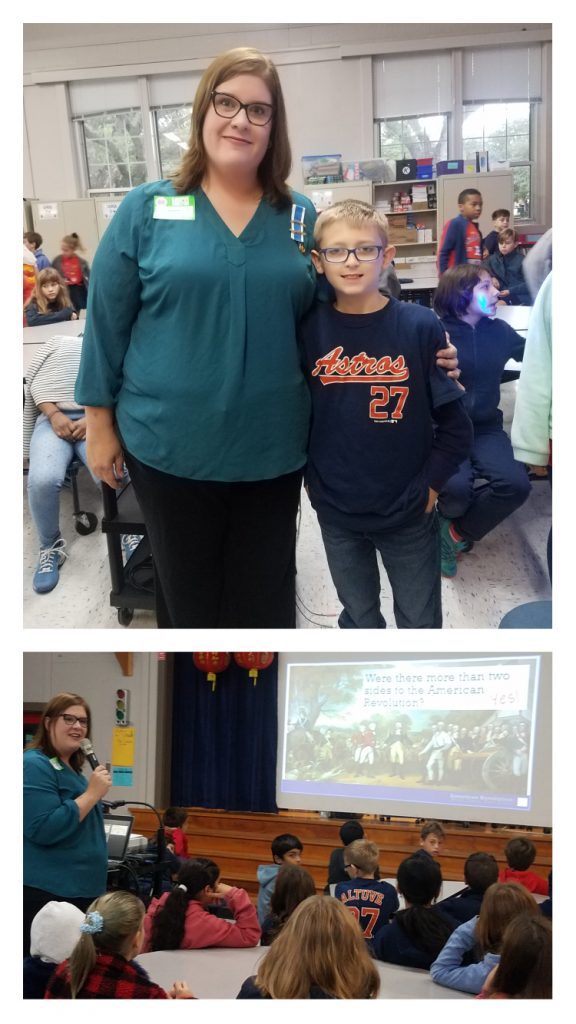
Another reason my October was filled to capacity was my first speaking engagement. I presented “American Revolution: More Than Two Sides” to fifth graders at my son’s school on October 24.
At the beginning of the school year, I told my older son’s teacher I was a genealogist and new DAR member. I volunteered my time and expertise for anything she needed, and she came back with a request — giving a talk about the complexities of the American Revolution. Specifically, the “sides” of the American Revolution (patriot, loyalist, neutralist) and the factors that led colonists to join these sides. The talk served as an introduction to the fifth graders’ American history project this semester.
I had a great time researching this topic and presenting to the 100-student audience. In addition to the socioeconomic aspects of choosing a side, we discussed the concerns of Native Americans, slaves and free blacks, other countries like France and Spain, and religious groups such as the Anglicans, Quakers, and Jews.
The fifth graders were an attentive group and asked great questions. My favorites were, “How did you learn all this?” and “How do you know what your ancestors were doing way back then?” My answers: Learn library research skills and cursive — that’s how you locate original records and know how to read them. These skills are so often overlooked in our digital world but are vital to genealogists and historians.
I know the fifth graders will have some interesting projects, and I look forward to seeing them in a few weeks at their project expo. Meanwhile, my son thinks his mom is one smart cookie.
TxSGS 2019 Family History Conference – Recap
The annual Family History Conference for the Texas State Genealogical Society (TxSGS) was held October 11-13 in Houston. After attending my first conference last year in San Antonio, was there any question I would attend again? Nope — especially with the event practically in my backyard!
I had a great weekend of immersing myself in genealogy education, catching up with old friends, and making new contacts, too. I volunteered with box lunch distribution and also at the Clayton Library Friends’ book sale booth.
Attending the conference as “not a newbie” was a different experience. I didn’t have the same giddy excitement as last year because — after a year’s involvement with TxSGS — I knew the high-quality experience to expect from our state organization. (Maybe that means I’m now a little bit spoiled…?) I knew better what to anticipate and how to choose sessions and topics that match my professional development needs.
Some of my favorite sessions were the ones that gave me concrete ideas and action plans for my research. “Applying Family Naming Traditions to Your Genealogical Research” by Bernard Meisner opened my eyes to how I should consider naming order and middle name selection in breaking brick walls on my McMurry and McKaskle lines. I previously thought naming conventions applied only to northern families or new immigrants, but these conventions can apply to any ethnic group. I love a good case study, and David Passman’s “Who Are Charles L. B. McCrory’s Parents?” did not disappoint. His research was done for his step-mother’s DAR application, so the types of records he used for proof arguments were all ones I can utilize for my future supplemental applications. I also highly enjoyed Ari Wilkins’s “Reconstructing Communities Using Genealogical Resources.” She uses Google Earth Pro in a similar way as I do — but in urban areas which fascinated me. Ari gave me lots of ideas on how to add photos to my map research and share those maps with others.
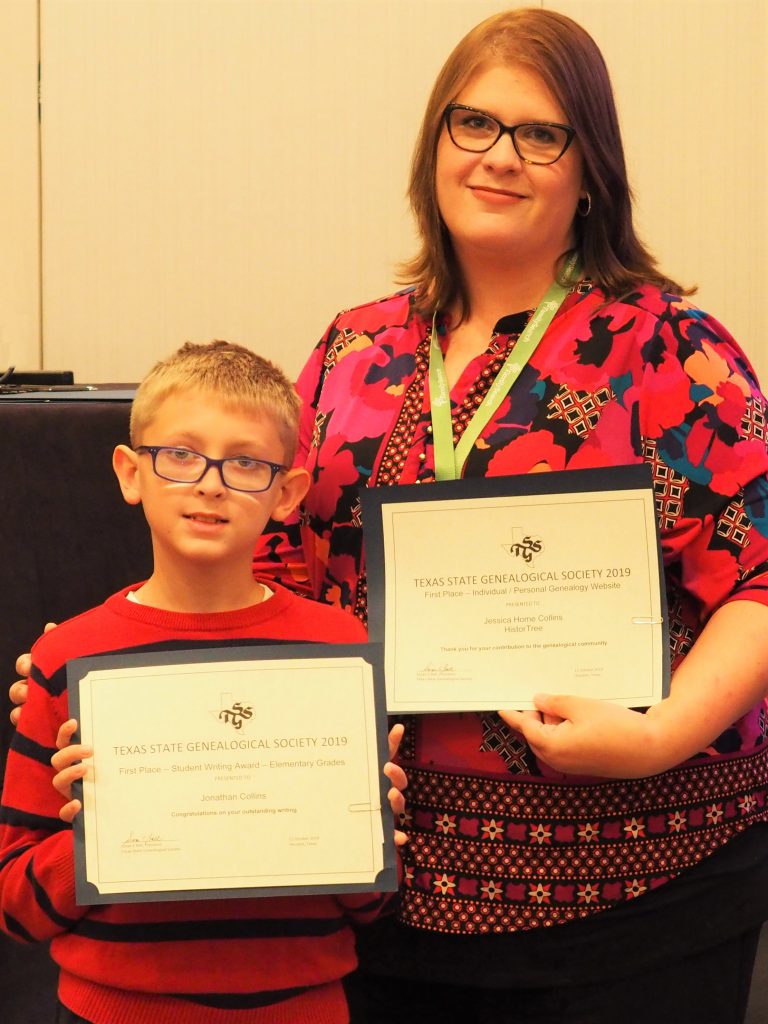
I attended the awards banquet this year because my son Jonathan and I both had submissions in the Awards Program. My blog won first place in Category II: Website for an Individual (Personal Genealogy), and Jonathan won first in Category VII: Student Projects (Elementary Grades 4-6). The quarterly journal Stirpes is actually running an article about us in the next issue because we are the first parent and child to win in separate categories at the same conference!
I’m super proud of Jonathan. He spent two weeks this summer preparing a four-generation pedigree chart, four family group sheets, a map, and an essay with photos about his grandfather’s life. He received a $100 prize and — like any 10 year old — it was spent by the next weekend.
My friend Teresa won the door prize drawing and received a complimentary registration to TIGR 2021. I won the other door prize and now have a “guaranteed early-bird registration pass” to the same event. I probably would have decided about TIGR before that deadline, but it’s definitely something I can wave in front of my husband and say, “I have to go — I have a coupon!”
Most of all, attending the conference was a marker in how far I’ve come with my genealogy education in the past year. It showed me how much I’ve improved and learned — and learned I need to improve! — since I made a commitment in moving toward this pursuit as a profession. Here’s to another year of continued progress!
Preserving the Alexander Rose Hendry Letter
Acquiring the Alexander Rose Hendry letter has been the highlight of my 2019 genealogy year. Once the letter arrived in September, I opened it only once — then I avoided touching it until I could take the correct steps in preserving it.
That’s when it pays to have an archivist friend. I met Rachael Altman, Director of the Carnegie History Center in Bryan, Texas, at the Texas Institute for Genealogical Research (TIGR) this summer in Austin. We were both in the Advanced Southern Research track. I remembered Rachael’s role at Carnegie included archiving photographs and documents, so I consulted with her about the best way to care for my new-found family heirloom.
Rachael recommended an archival sleeve from Gaylord Archival. I bought a 4-mil polyester envelope that is sealed on three sides so the letter could be preserved unfolded in its entirety. To fit the letter, I had to purchase the 11″ x 17″ size. Paper from this era is not sized to the same standards we have today, so the letter isn’t to the edges of the archival sleeve and has some wiggle room. If my budget were unlimited, I could have a special sleeve constructed to its specific measurements — maybe a future improvement?
Rachael was in town for the Texas State Genealogical Society’s annual conference in October. We met the evening before the conference at Clayton Library, and Rachael did the work I was too unnerved to do myself — carefully unfolding the letter, attempting to remove the tape, and flattening the document inside the envelope.
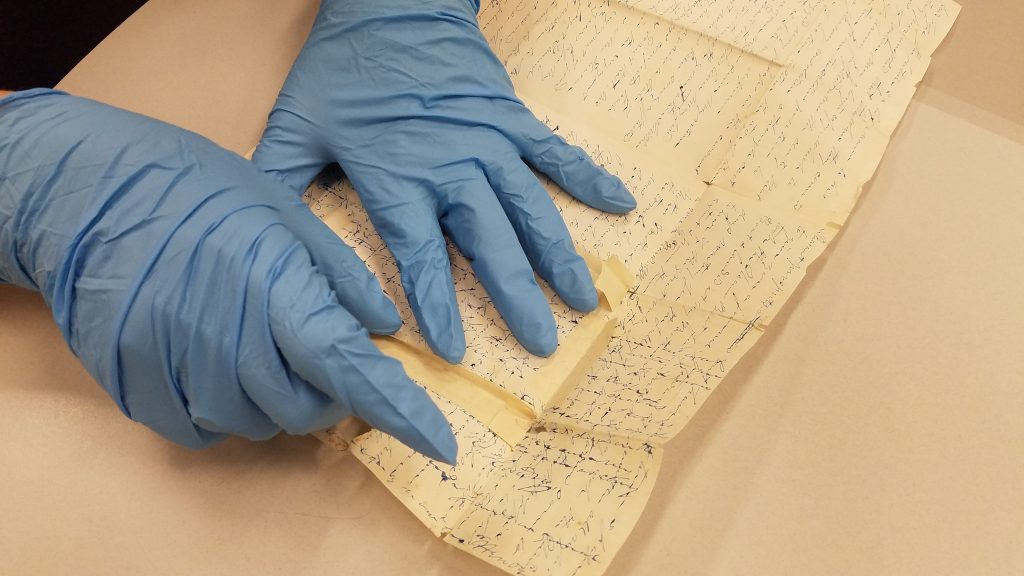
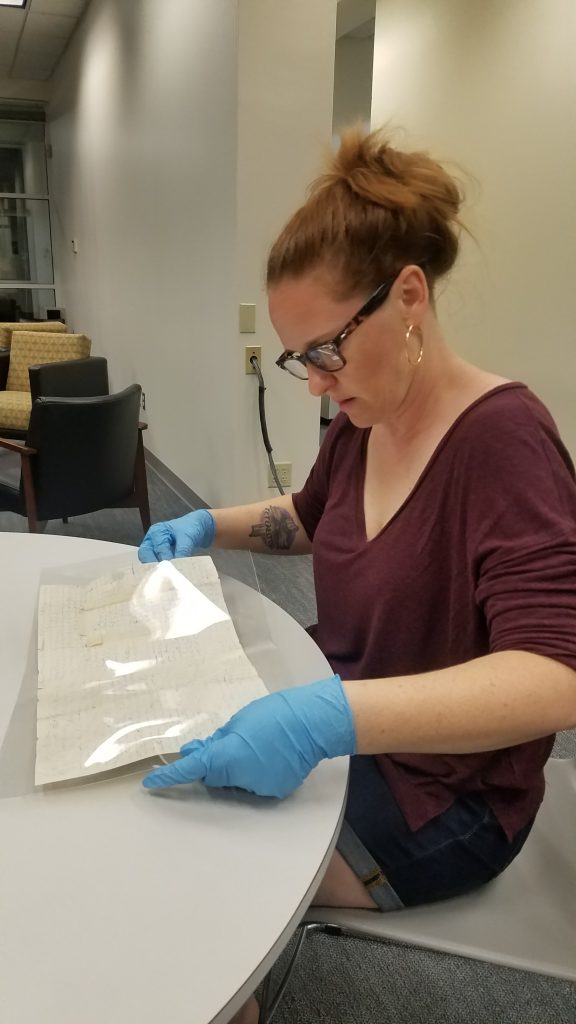
Unfortunately, Rachael did not have the tools with her to remove the tape, but she did get the letter into the sleeve without any of the fragile folds tearing. She also showed me some techniques for using a smartphone camera to isolate and closely zoom to troublesome sections of the letter for transcription.
The letter in its archival sleeve needs to be stored flat, so my next step is ordering an acid-free box.
Once we were able to examine the letter more closely in the sleeve, we realized the seller had transcribed the date incorrectly. The letter is dated January 22, 1855 — not 1845. I’m currently working on transcribing the entire letter. Stay tuned for the results. It’s a slow process, but one I feel will be very rewarding.
Thanks so much for your help, Rachael! You’ve helped preserve a piece of 165-year old family history for my Hendry family.
